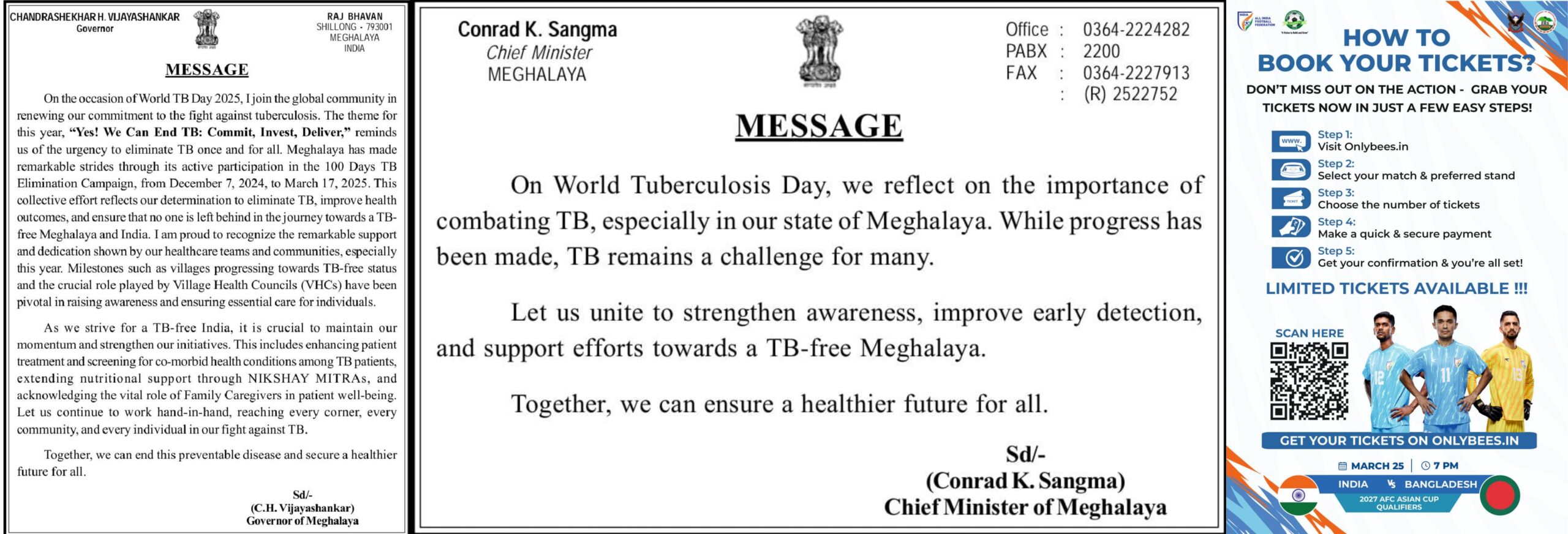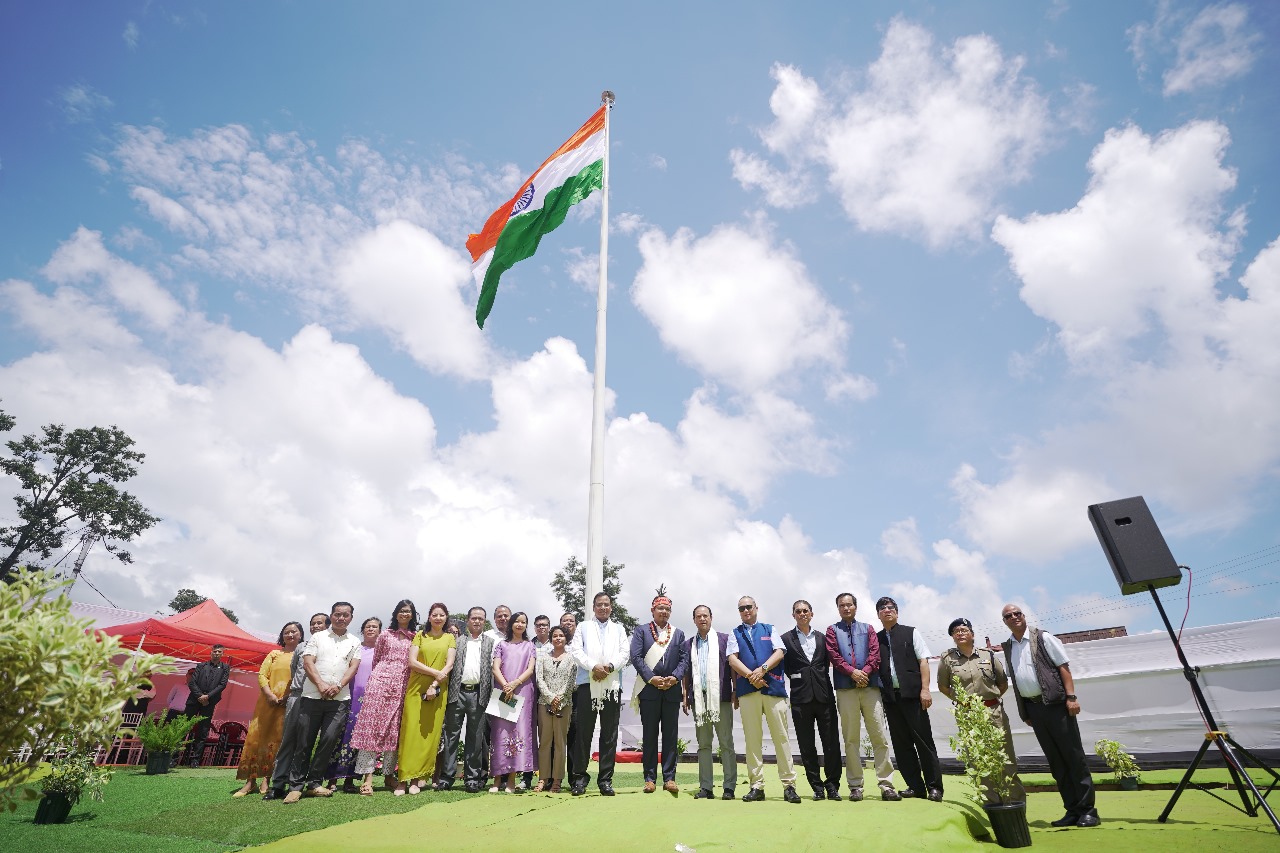Shillong, Sep 3: In a historic event, Chief Minister Conrad K. Sangma today hoisted a high mast national flag and unveiled the master plan for the redevelopment of the Barik Complex into a Unity Park. The event, held at the PWD complex in Barik, Shillong, marks a significant step toward transforming the city into a greener and more culturally vibrant space.
Speaking at the event, the Chief Minister expressed his enthusiasm for the project, stating, “Today marks a historic moment as we hoist the high mast national flag and unveil the master plan for the redevelopment of the Barik Complex. This project, with an estimated cost of approximately ₹25 crores, aims to beautify Shillong and make it a greener city.” He added that the work is expected to commence by October or November this year.
The redevelopment project is designed with sensitivity to the local community and heritage. Emphasizing this, the Chief Minister said, “The project will be developed keeping in mind the sensitivity of the people and society, ensuring minimal intervention and preserving the legacy and history of nine heritage buildings.” He highlighted that the Unity Park would symbolize the unity of the state and country, featuring representations of various cultures and tribes, including Khasi, Pnar, Garo, Bodo, and other communities.
The Unity Park will showcase art and symbols of different cultures, not just from Meghalaya but from across India. “The park will serve as a reminder of the unity among the people of the state and the country,” the Chief Minister said, commending the collaboration between the Urban Affairs Department and the Public Works Department (PWD) in bringing this iconic project to life.
In addition to the Barik Complex redevelopment, the Chief Minister announced plans for further projects aimed at transforming the entire city of Shillong, with significant progress expected within the next 12 months. He underscored the importance of unity, reflecting on the history of the state’s tribes coming together to achieve statehood, and expressed hope that the Unity Park would continue to inspire unity among the people.
Chief Secretary D.P. Wahlang, IAS, also addressed the gathering, noting the significance of the high mast national flag, which is one of the tallest and largest in the North East region. He remarked, “The initiative to retransform the Barik Complex has been in the planning stages for a long time but has finally come to fruition under the present government’s vision.”
The Chief Secretary praised the government’s approach, which balances aggression with sensitivity, ensuring the protection of heritage buildings that will now serve as iconic landmarks. He added that the project aims to reduce traffic congestion in Shillong, showcasing the government’s commitment to balancing progress with preservation.
The redevelopment plan for the Barik Complex, unveiled today, reflects the government’s vision for Shillong: to alleviate congestion in the core city, foster open spaces, enhance residents’ quality of life, and create pedestrian-friendly areas and recreational spaces for children. The PWD complex at Barik is set to become an iconic public space celebrating cultural heritage, providing a rich experience for tourists, and serving as a social gathering place for residents. The ambitious project will create a sprawling 3.5 acres of open space, marking the first large, planned open area for citizens in the state.
The monumental national flag, made of 100% polyester cloth, stands at a height of 40 meters and measures 45 feet by 30 feet, adhering to all protocols specified in the Flag Code of India. The flag and its pole have been designed with specialized expertise to withstand various technical challenges, including wind resistance.
Key components of the ₹25 crore project include a pedestrian plaza, an open ground, the high mast national flag, an open exhibition area, a taxi terminal with parking, a moving lane for private vehicles, a food court, a children’s play area, and the adaptive reuse of nine identified heritage buildings into tourist information centers, souvenir shops, cafes, galleries, and workshops.
The project involves the transformation and restoration of nine heritage buildings, over 100 years old, currently housing PWD offices. With the expertise of INTACH (Indian National Trust for Art and Cultural Heritage), these buildings will be repurposed while preserving their historical significance. INTACH has identified one Grade 1 building (of national or historical importance) and eight Grade 2 buildings (of regional or local importance) within the complex, all of which will be adapted for modern use.
The event saw the presence of several dignitaries, including Water Resources Minister Comingone Ymbon, Power Minister Abu Taher Mondal, Chief Secretary D.P. Wahlang, Deputy Commissioner Rosetta Mary Kurbah, Director of Urban Affairs Isawanda Laloo, Director General of Police Idashisha Nongrang, and PWD Secretary B.W. Phira, along with officials from various departments, police officers, and NCC cadets.


